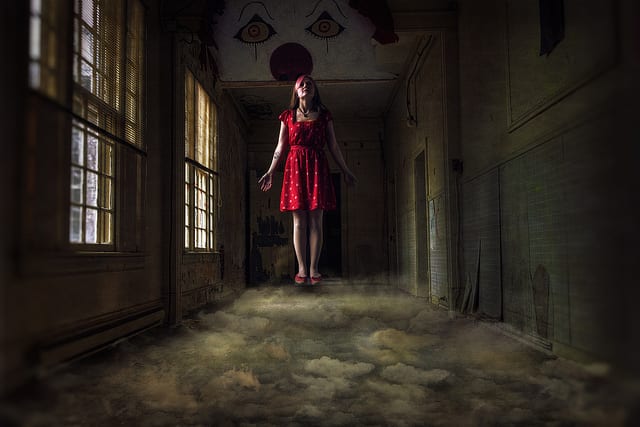We certainly admit that we’re not shy regarding talking about carbon footprints and consumerism in movies at Postconsumers. We’ve dedicated page space to the carbon footprint of an action blockbuster, the carbon footprint of a night out at a RomCom and the consumerism layered into science fiction movies. With Halloween just around the corner, we thought we’d take a closer look at some of the mass consumerism that gets tied into the always fun and frightening horror movies that make their appearance at this time of year. You may wonder how any consumerism can be layered in among the terrifying nightmares and bloodshed of a Halloween horror movie, but believe us when we say it can be done. How can it be done? Here are just a few ways.
Halloween Movie Characters Make Great Halloween Costumes
Let’s start with the obvious! Over the years, how much money do you think has been made selling Jason Voorhees hockey masks, Scream ghoul masks and Freddy Krueger blade hands and signature hats? We’re going to just assume that the answer is “a lot” based on how many of these we see on the streets each Halloween. Every time a new horror movie villain is crowned, there’s the opportunity for a mini-industry of Halloween costumes. Yes, this is certainly true of other types of movies as well, particularly fantasy and science fiction. But the reality of the matter is that it’s more of a consumer merchandising opportunity with Halloween horror films than with anything else. There’s a built-in purchasing audience for the end product and there’s a direct route from theme to usage. Do studios and producers think about the potential Halloween costume merchandising tie-ins when they create their villains? Do vampires bite?
There’s An Entire Genre of Animated Halloween Films
Halloween is a holiday that appeals to all age ranges. From adults and older, teenage kids who want to maximize the horror component to small children who love the magic of the holiday. Don’t think that the high-dollar value small-children part of that mix has gone unnoticed by the movie industry. From more refined films like The Nightmare Before Christmas to children’s favorites like Monsters, Inc., Coraline and Hotel Transylvania – the film industry has not been shy about releasing kid-oriented Halloween movies that can correspond with a full toy line, both stuffed and otherwise, that children can pressure their parents into buying for them. From the film industry’s perspective, one of the great benefits of Halloween is the ability to cross demographic age boundaries and market across the board. It’s not a secret that children’s movies and the corresponding merchandise can be a gold mine, just take a look at Disney or Pixar to see an example. Add in some seasonality (which we’ll discuss below) and you have the opportunity to make lots of bang for your buck.
Seasonality Is Every Marketer’s Friend
We’ve broken down some of the benefits of seasonal marketing before on the Postconsumers blog. From a horror movie maker’s perspective, there are some huge benefits to the seasonal nature of scary movies. Every Halloween season, people return to your movie (if it’s a classic or even just any good). And that provides new opportunities to make money off of merchandise all over again. But the true beauty of horror films from a consumer merchandising perspective is that they can take advantage of seasonal Halloween marketing while also being viable merchandising avenues all year long. Plenty of people enjoy and even obsess over horror movies for time periods greater than the final week of October. And those people will buy merchandise and collectibles all year round. So if you hit things correctly by making a successful Halloween horror film, you can see revenue from merchandising all year long with a significant bump during the Halloween season.
And Of Course There’s Some Merchandising in These Movies…
How many horror movies have you watched where the victims died while drinking a specific soft drink? How many where a specific car was involved? Most recently, have you paid attention to which smartphones and technology are being used by the characters in your favorite horror films? All of this is paid advertising by the companies who manufacture the products to get you thinking about their brand or product while you’re getting your scream on at a scary movie.
What’s Truly Scary is How Effective This All Is
We don’t need to give you numbers to show you this! (And in fact we couldn’t because those numbers seem to be highly secretive). What we will tell you to do is just take a walk around your neighborhood this Halloween season and see how much horror movie (and TV show, The Walking Dead is no joke) merchandise you see. The thrill may be in the fear, but the machine is in the merchandise.
Did we miss a way in which mass consumerism creeps into Halloween movies? Tell us about it on the social media channels below.
Facebook | Twitter | Instagram | Tumblr | Pinterest | Google+ | Medium
Photo Credit: Donnie Nunley via Flickr




